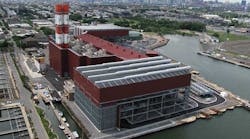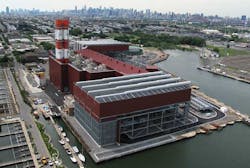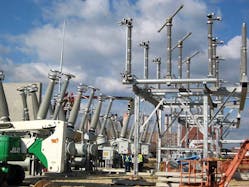Electric utility construction starts soared to a record high during 2012 but may dip 31% this year to $35 billion, according to McGraw-Hill Construction. Last year, two nuclear power plants were underway, but as of this year, not as many large projects are breaking ground. This trend is leading to a potential sharp decline in this sector this year.
Power companies rushed to start projects at the end of last year to take advantage of tax credits that were set to expire (see Chart). Since then, the tax credits were extended, but the industry’s push to beat the deadline created a spike in activity.
Like many other markets, the strength of the energy industry often comes down to cost. Over time, the balance has shifted back and forth among oil, gas, and coal for energy production due to a fluctuation in energy production costs and EPA regulations, says Bernard Markstein, U.S. chief economist for Reed Construction Data.
“The drop in natural gas prices led to a dramatic shift toward natural gas over coal with the added benefit that natural gas is cleaner,” says Markstein. “Also, many coal plants are older and less efficient. With many needing replacing and gas prices coming down, that has helped push construction of new natural gas-fired plants.”
In addition to pricing issues, environmental requirements have driven change. For example, the Environmental Protection Agency requires electric utilities and power producers to not only upgrade or replace existing coal facilities, but also to limit pollution and adhere to strict mercury and air toxic standards.
Natural gas still remains cheap relative to oil, Markstein says, and the price difference between the two has prompted a shift in demand from oil and coal to natural gas. Many independent power producers and electric utilities are able to switch between fuel sources relatively easily, but the law of supply and demand has once again taken hold. This recent shift has exerted downward pressure on oil prices and upward
pressure on natural gas prices.
In early October, however, natural gas prices dipped slightly. Markstein says the cooler temperatures nationwide led to a seasonal reduction in demand for electricity for cooling. Also, he attributes the price decline to a shift away from natural gas due to an earlier rise in price.
As far as fuel for the power plants, shale gas has proven to be a viable option, says Anthony Mann, president and CEO of E-J Electric Installation Co. in Long Island City, N.Y. In fact, Public Service Electric & Gas, Newark, N.J., is using this type of fuel for two peaking plants, including a 150MW plant in New Haven, Conn., and a 300MW plant in Kearny, N.J.
“Shale gas is providing PSE&G with a lower cost, more reliable source of fuel for power plants,” says Mann.
In addition to the plants for PSE&G, the contracting firm (No. 13 on EC&M’s 2013 Top 50 listing) has also recently wrapped up work on three 500MW power plants in the Queens area of New York. One of the electric generating facilities uses natural gas as the primary fuel with low sulfur distillate fuel oil as the backup fuel (720 hr a year). This power plant also features combined cycle technology and air pollution control systems. Within this facility, E-J Electric and the mechanical contractors working on the project installed such equipment as combustion turbines, heat recovery steam generators, steam turbines, and air-cooled condensers.
While E-J Electric has worked on several power plants since it was founded it 1899, Mann has noticed a recent decline in the power generation market due to fewer power plants being built.
“The newest opportunity arising for electrical contracting firms is the upgrade of the National Grid System,” says Mann. “This entails revamping the high-voltage power delivery system throughout the United States.”
Reliability of the grid is a hot topic for everyone in the country. Electrical contracting firms with expertise in building and maintaining transmission and distribution lines, switchyards, and substations are well positioned to grow in this demanding market sector.
By partnering with electric utilities, electrical contractors nationwide are taking advantage of the opportunities to upgrade the grid and help provide reliable power to residential, commercial, and industrial customers nationwide.
Fischbach is a freelance writer based in Overland Park, Kan. She can be reached at [email protected].






